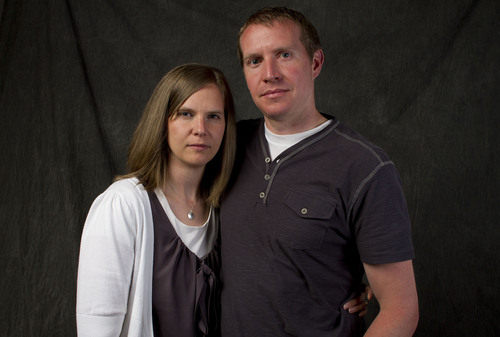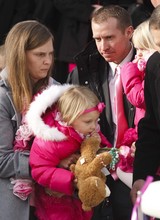This is an archived article that was published on sltrib.com in 2013, and information in the article may be outdated. It is provided only for personal research purposes and may not be reprinted.
Utah is lauded in a new national report as one of four states that this year raised the bar on safety standards for protecting children during disasters.
But 28 states and the District of Columbia still fail to require the emergency safety plans for schools and child care providers that were recommended by a national commission after Hurricane Katrina in 2005, according to a report from Save the Children.
The lack of such plans could endanger children's lives and make it harder for them to be reunited with their families, the report said.
Included in the report are pleas for heightened school safety and better disaster preparation by a former Ogden couple, Robbie and Alissa Parker, whose 6-year-old daughter, Emilie, was killed at Sandy Hook Elementary in Connecticut last December.
Alissa Parker said in the report that the confusion at Sandy Hook after the shooting intensified the stress.
"We were told by three different people to look for our daughter at three different places. The chaos made it so much worse for all of us," she told Save the Children.
"Our hope now is that people will rally around school safety so we can save other children's lives," Robbie Parker is quoted as saying.
The aid group led the now disbanded National Commission on Children and Disasters, which was formed after Katrina revealed the vulnerability of children during disasters.
Save the Children's 2013 report praises Utah, Nebraska, New Jersey and Tennessee for joining 18 other states in adopting all four basic standards recommended by the commission in 2010. In 2008, only four states met all four standards.
Utah's child care licensing administrator worked with Save the Children to rewrite the rules and require centers to have plans to take care of children with special needs during disasters, said Richard Bland, senior director for policy and advocacy for the group.
"It really is a success story. This is how it's supposed to work," Bland said.
Enough people contacted Gov. Gary Herbert, questioning Utah's failure to meet all the standards, that the governor's office put Bland in touch with the licensing administrator in the Department of Health, he said.
The three other standards, which Utah already met, require K-12 schools to have comprehensive disaster preparedness plans and child care centers to have disaster plans for evacuation and family reunification.
"Every workday, 68 million children are separated from their parents," Carolyn Miles, Save the Children's president and CEO, said in a statement with the group's annual disaster report card. "We owe it to these children to protect them before the next disaster strikes."
Save the Children said it found gaps in emergency preparedness during a year when school shootings devastated Newtown, Conn.; Superstorm Sandy wreaked havoc along the East Coast; and tornadoes ravaged Oklahoma.
Miles said such disasters "should be a wake-up call, but too many states won't budge."
A spokeswoman for the National Governors Association declined comment on the report, referring questions to the various states.
Four states — Idaho, Iowa, Kansas and Michigan — do not require any of the four recommended plans, the study found, while D.C. and 24 remaining states each require one or more of them.
The 24 other states that meet at least one of the standards, but not all four: Alaska, Arizona, Colorado, Delaware, Florida, Georgia, Illinois, Indiana, Maine, Minnesota, Missouri, Montana, Nevada, North Carolina, North Dakota, Ohio, Oklahoma, Oregon, Pennsylvania, Rhode Island, South Carolina, South Dakota, Texas and Virginia.





